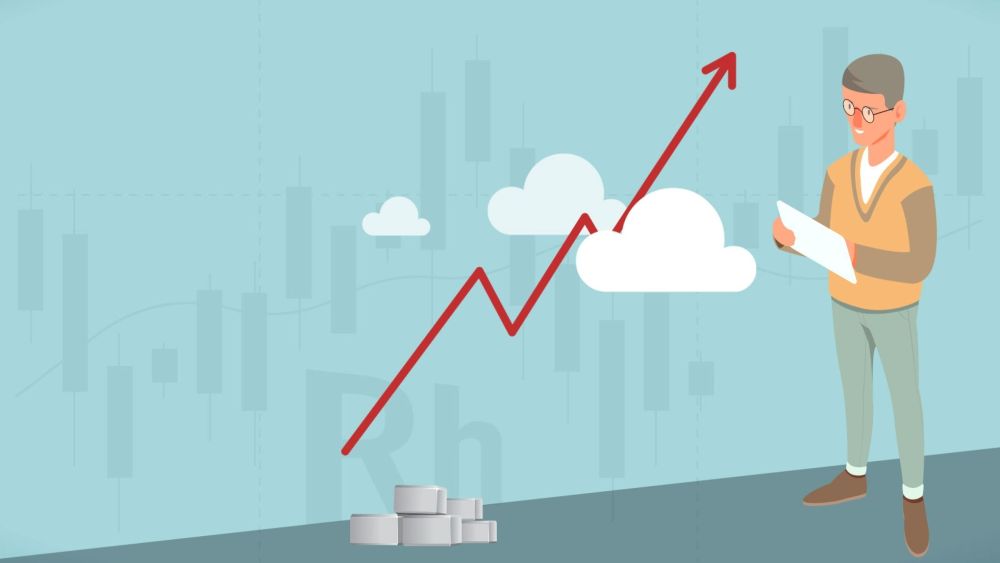The Rhodium facts
Rhodium facts? The fifth most precious metal is Rhodium, and it is considered one of the rarest and strongest metals on the planet. It’s 100 times rarer than even gold and the price used to show it in the past. However, trading for Rhodium is at one of the lowest ever, and it’s not likely to bounce back anytime soon.
Rhodium isn’t well-known, but it is part of the precious metals group. The recovery it takes should make investors like you a small fortune, but only if you know when to invest. The trouble right now is that rhodium investments are just as hard to find as the actual metal.
If you’re sitting on some Rhodium, you may think that it’s going to be easy to sell or trade with it, but because it’s not well-known, it’s challenging.
Rhodium facts 1: Where It’s Being Used and How It’s Mined
Rhodium (Rh) is a chemical element. The rare metal is silvery-white, corrosion resistant, and hard. It’s also a chemically inert metal. Naturally-occurring Rhodium is considered a free metal and is alloyed with metals of a similar composition. It’s rarely used as a chemical compound, but it can be. It’s considered the most valuable of precious metals and is also highly rare.
Rhodium is primarily found in nickel or platinum ores along with other metals in the platinum group. William Hyde Wollaston discovered it in 1803 in one of these ores and named it because one of the chlorine compounds was a rose color, which was only produced after the compound reacted with aqua regia, a powerful mixture of acid.
It is primarily used to create catalysts in three-way catalytic converters for automobiles. This accounts for almost 80 percent of the world’s rhodium production. Rhodium is inert from chemicals and corrosion and is rare, which is why it is usually alloyed with palladium or platinum and applied as a corrosion-resistive and high-temperature coating.
Primarily, rhodium is mined from South Africa, some parts of North America, and the Ural Mountain river sands. There is also a mine in Sudbury Ontario. Russia also exports rhodium, but in lower amounts than South Africa.
Rhodium facts 2: Prices
Looking at the varying prices of rhodium over the last 12 years, you can see that 2007 brought a cost of almost eight times that of gold, 27,250 times that of copper, and 450 times that of silver. In 2008, the price rose up to $10,000 an ounce, but only for a brief time. At the end of 2008, the economic slowdown reduced rhodium prices to less than $1,000 per ounce. In 2010, the price did rebound to $2,750, but prices dropped back to less than $1,000 per ounce in 2013.
Because of financial and political problems, the oil prices were very low at the time, which caused many metals to experience a price drop. Because vehicle production slowed in India, China, and other countries, rhodium prices were lowered because that was its primary use.
Trading Challenges
Because rhodium is primarily used in the automotive industry, it is likely that this is where you’ll start finding buyers and sellers. However, you may find it hard to trade because rhodium tends to be a byproduct. People who mine the rhodium only do so because they’re mining other products. While it’s useful, it’s not a necessity.
While rhodium is one of the strongest metals on the planet, it is still brittle and isn’t very pliable. It can be impossible to mold it into something, which is why it is usually melted and used as a coating; that’s also why it is paired with other metals to become an alloy.
If you already have a lot of rhodium, you could hang onto it and see if prices go up; it’s not going to hurt to have the product in a safe deposit box to see. However, when prices do start rising, it could be challenging to determine when is the best time to sell. You’re not likely to have help with automation and brokers may not know how to help you because rhodium trading isn’t as common. Therefore, many industry specialists recommend that you wait until the price goes up and sell it to companies who use it to manufacture other products.
-

The rhytm beneath the noise
-

You Don’t Need a Trading Style. You Need an Edge.
-

Consistency Isn’t the Goal—It’s the Outcome
-

What 2 Quadrillion Data Points Told Us
-

Math and Physics-Based Trading in Any Market Condition
-

Do not worry about anomalies
-

Consistency should not be the goal. Consistency should be the result.
-

Stop canceling fridays
-

The Elliott Wave Forecast is Subjective, Bias Driven And Backwards looking
-

Finding patterns in market data

